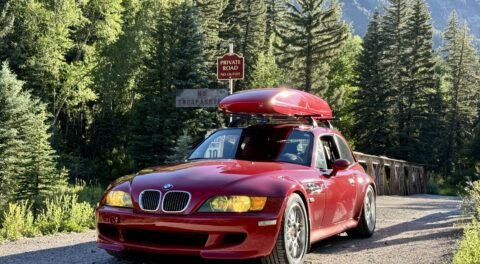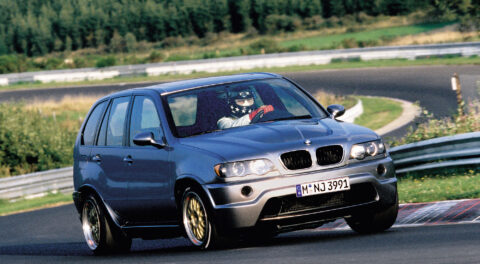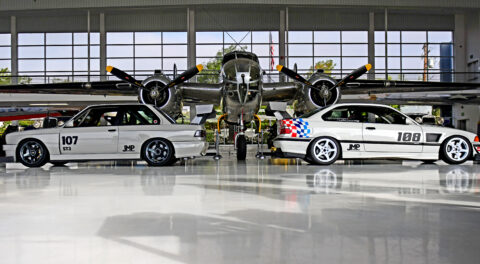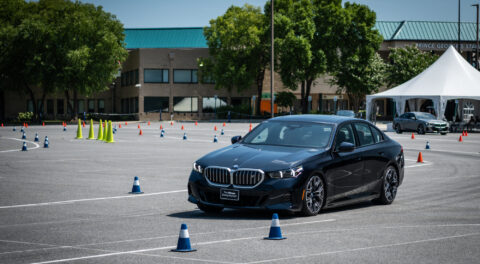I’m trying hard here to avoid the analogy of a caterpillar morphing into a butterfly, but it fits really well: I’m talking about the BMW Car Club of America Foundation. I saw it as the caterpillar sixteen years ago—and last month, it became the butterfly.
People from all over the country descended on Greer, South Carolina, on a January weekend to celebrate the realization of an idea going back to the turn of the century. (The turn of the 21st century; I’m not that old.) The party was called the “Weekend With Heroes,” and it celebrated the successful conclusion of the Foundation’s first museum-quality exhibit, “Heroes of Bavaria: 75 Years of BMW Motorsport,” which exhibited 25 significant BMW race cars. The “Weekend With Heroes” capped the exhibit’s seven-month run at the BMW Foundation museum, which was probably the finest display of significant BMW race cars all in one spot outside of Munich.
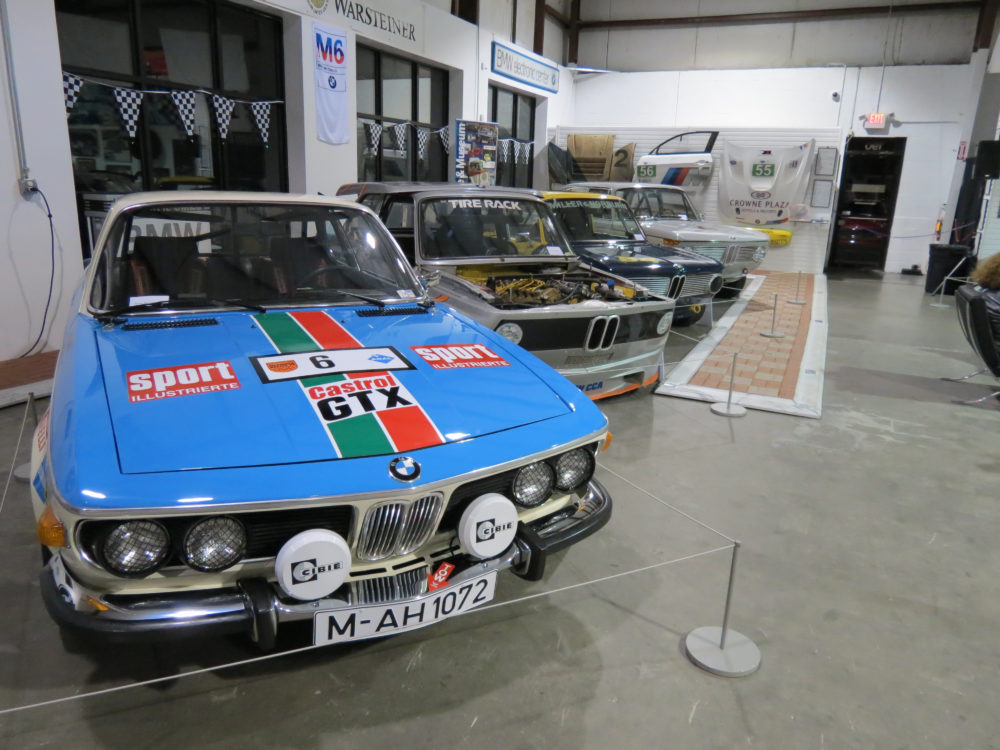
Part One of the festivities was a champagne reception on Friday that featured a “pit walk” by Erik Wensberg, former BMW NA M brand-manager and the director of BMW NA’s racing teams from the 1980s through the early 2000s. Wensberg, who now serves as an advisor to the Foundation, offered interesting insights and facts about every display car—and the racers who drove them. In fact, many of the cars on display were the very same cars that Wensberg had managed when he was with BMW!
While the “heroes” on Friday were the cars, the heroes with whom we were fortunate to spend Saturday were former BMW drivers and racing legends Brian Redman and David Hobbs. Redman and Hobbs first participated in a delightful question-and-answer session moderated by Wensberg, and then signed autographs for the eager enthusiasts.
The success of the exhibit caused me to reflect back to the beginnings of the foundation. The idea of the BMW Car Club of America spinning off a 501(c)(3) charitable foundation was raised by BMW CCA treasurer Tamara Hull before I was first elected to the National Board in 2001, but I was there in 2002 as the idea became a reality when the BMW CCA National Board voted to create the foundation. The caterpillar had spun its chrysalis—and was preparing to fulfill its destiny.
The Foundation’s first success was in creating the Tire Rack Street Survival teen safe-driving program. In its fifteen years of existence, with national director Bill Wade at the helm and the ongoing support of BMW CCA chapters and SCCA and PCA regions, Street Survival has held more than 1,000 schools and provided more than 23,000 teens with car-control and emergency-situation avoidance-and-reaction training that has undoubtedly saved many lives. During those same years, the Foundation’s first employee, Michael Mitchell, was quietly preserving BMW history by amassing and organizing the largest collection of BMW artifacts and memorabilia outside of Munich; when the Foundation acquired its current building next to the BMW Performance Center, Mitchell finally had enough room to begin displaying more than just a small portion of the thousands of items in the BMW CCA Foundation’s collection.
The time had come for the foundation to present its first major museum-quality exhibit.
The team of Mitchell, foundation executive director Scott Dishman, trustee and Museum and Archives chair Bruce Hazard, foundation campaign coordinator Andrea Galehouse, the other trustees and dozens of volunteers and car collectors went to work—and with the support of BMW NA, “Heroes Of Bavaria” became real last May.
Now it was time to celebrate before preparing for the next exhibit.
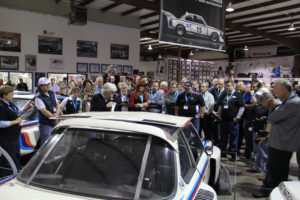 Redman and Hobbs both drove for BMW at various times, but as a fan of motorsports starting in the late 1960s—and an amateur racer now—I was more interested in what it must have been like to drive during an era when tracks were dangerous, cars could be lethally dangerous, and too many great drivers did not survive. Redman and Hobbs know how fortunate they were to have survived those days. I strongly recommend Brian’s book, Brian Redman: Daring Drivers, Deadly Tracks, if you want to understand how deadly their profession could be.
Redman and Hobbs both drove for BMW at various times, but as a fan of motorsports starting in the late 1960s—and an amateur racer now—I was more interested in what it must have been like to drive during an era when tracks were dangerous, cars could be lethally dangerous, and too many great drivers did not survive. Redman and Hobbs know how fortunate they were to have survived those days. I strongly recommend Brian’s book, Brian Redman: Daring Drivers, Deadly Tracks, if you want to understand how deadly their profession could be.
Hobbs also has a book coming out in March called Hobbo: The Autobiography of David Hobbs: Motor Racer, Motor Mouth.
On Saturday evening I waited patiently in line with everyone else to ask Redman and Hobbs to autograph my copy of the Heroes Of Bavaria: 75 Years of BMW Motorsports book—which contains outstanding photos of all the exhibit cars.
But I also had one other item that I wanted signed.
In 1973, as a young second lieutenant in Germany, I talked three other guys into driving 600 miles—each way—in an old VW Beetle to the 24-hour race at Le Mans. Smart? Probably not. Fun? Mostly. Exciting? Definitely.
At the race, I took six black-and-white photos with an old 35-mm camera. Not too long ago, I rediscovered them in an old album. One of the photos pictured the #15 Ferrari 312PB. I had that photo with me on Saturday; I handed it to Redman and said, “I’ve been waiting 45 years to get this autographed.”
Redman examined it closely and declared, “Yes, it’s me,” and signed it.
“Heroes Of Bavaria” drew rave reviews from practically everyone who saw it, from BMW executives visiting from Germany to representatives of other high-end auto museums in the U.S. The BMW CCA Foundation still has plans that will take years to complete, but with the “Heroes Of Bavaria” exhibit—along with Tire Rack Street Survival—its transformation from idea to reality has been extraordinary.
By the way, the next exhibit is titled “The Icon: 50 Years Of The BMW 2002.” It’s coming this spring, and if you love BMWs, you don’t want to miss it.
Finally, I have to brag a little that my weekend with heroes lasted a little longer than what most of the attendees experienced. After settling in to my seat on the Sunday-morning flight from Greenville to Atlanta, it took me a minute to realize that the man in the seat next to me was David Hobbs. Best flight to Atlanta ever.—Scott Blazey


